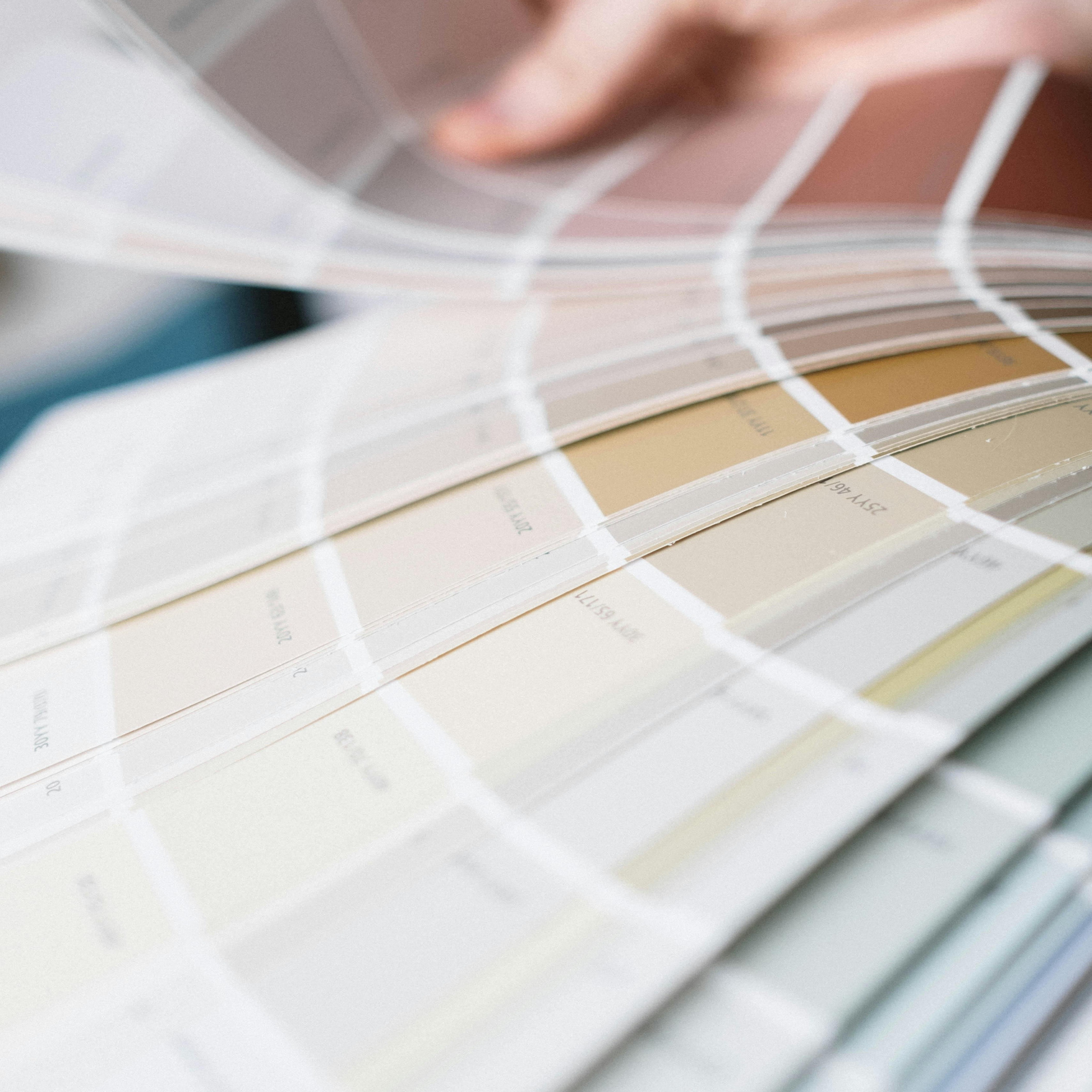The Art of Decor: How Color Choices Influence Home Ambiance

Color is one of the most powerful elements in interior design, shaping the mood and energy of a space. From creating a calming atmosphere in a bedroom to energizing a kitchen, the right color palette can completely transform a room. Understanding how different colors affect emotions and how they work together is key to designing a home that reflects your style and enhances your living experience.
The Psychology of Color: How It Affects Mood
Colors aren’t just decorative—they also influence how we feel and behave. Different colors are known to evoke specific emotions, which is why understanding color psychology is crucial in interior design.
Warm Colors: Inviting and Energizing
- The colors— red, orange, and yellow are linked to coziness, vigor, and excitement. When used excessively, red might feel intense, yet it can also arouse desire and enthusiasm. Yellow encourages joy and optimism, whereas orange is imaginative and fun.
- Ideal for: Living spaces, dining rooms, kitchens, and foyers where a lively, inviting atmosphere is desired
Cool Colors: Calm and Relaxing
- Cool colors— like blue, green, and purple often provide a peaceful, tranquil impact. Blue is perfect for bathrooms and bedrooms since it is frequently used to encourage relaxation and lower stress levels. Purple lends a feeling of elegance and sophistication, while green, which is symbolic of nature, inspires peace and rejuvenation.
- Ideal for: Anywhere a calm, relaxing ambiance is sought, such as meditation areas, home offices, restrooms, and bedrooms.
Neutral Colors: Versatile and Timeless
- Neutral colors—white, gray, beige, and black offer a versatile base for any design aesthetic. Gray lends refinement and balance, while white gives the space a feeling of openness and cleanliness. Black accents offer drama and depth, while taupe and beige provide warmth without being overbearing.
- Ideal for: Kitchens, living rooms, hallways, and any other space where a classic, versatile backdrop is required. Bold accent colors go great with neutrals as well.
Understanding Color Schemes: How Colors Complement Each Other
Once you understand how individual colors impact mood, it’s time to consider how they work together to create the desired effect. Choosing the right color scheme can enhance the overall flow and harmony of your space.
1. Monochromatic Scheme
- A monochromatic color scheme employs a single hue in a variety of tints and shades. Because the tone variety adds subtle depth without overpowering the room, this method produces a unified and peaceful atmosphere.
An example of a calm and peaceful setting would be a soft blue room with light blue and navy accents.
2.Complementary Scheme
- On the color wheel, complementary hues are opposite one another, like red and green or blue and orange. These combinations produce strong contrast, which can be eye-catching and colorful, enlivening a space. To prevent overcrowding the room, balance is essential.
For instance, a living room with blue furnishings and a bright orange accent wall for a striking, energetic vibe.
3. Analogous Scheme
- On the color wheel, analogous hues such as blue, teal, and green are adjacent to one another. Because of their inherent harmony, these colors look good in areas where you desire a calm, cohesive aesthetic.
Example: To create a calm, nature-inspired atmosphere, a bedroom can be decorated with different hues of green, such as mint and forest.
4. Triadic Scheme
- Three hues from the color wheel, such as red, yellow, and blue, are used in a triadic color scheme. This well-rounded strategy preserves harmony while adding vitality and diversity.
For instance, a home office that uses blue, yellow, and red accents to promote concentration and creativity.
The Impact of Lighting on Color Perception
- Natural Light: Natural light brings out the finest colors. While warm tones like yellow and orange seem more welcoming and upbeat, cool tones like blues and greens appear vivid.
- Warm Lighting: Earthy hues (browns, reds, and yellows) are accentuated by warm yellow light bulbs, which provide a warm, welcoming ambiance that is ideal for dining rooms or living rooms.
- Cool Lighting: Cool hues like blue and green are accentuated by cool-toned lighting (LED or fluorescent), giving an air of modernity, crispness, and vitality. For areas where you want a modern, fresh feel, this is perfect.
Tips: To make sure your colors seem the way you want them to, always test them in various lighting settings, particularly in spaces with a lot of natural light or low lighting.
Using Color to Maximize Space
- Light Colors for Small Spaces: Light shades (whites, soft neutrals, pastels) reflect more light, making smaller rooms feel more open and airy. This is especially effective in compact spaces like bathrooms or small bedrooms.
- Dark Colors for Coziness: Dark tones (navy, charcoal, deep green) create intimacy and warmth. While they can make larger rooms feel smaller, they also add sophistication and drama—ideal for living rooms or dining areas where you want a cozy, enveloping atmosphere.
Final Thoughts: Choosing the Right Colors for Your Home
- Function and Mood: Consider the room’s intended use while selecting colors. While energetic colors are ideal for kitchens, home offices, or living areas where activity and contact are common, calming colors are ideal for spaces that are meant to be relaxing, such as restrooms or bedrooms.
- Test Samples: Before making a final choice, always try paint samples on your walls to see how they appear in various lighting conditions.
- Add Depth with Textures and Accents: Using furniture, textiles, and artwork to layer colors can give the design depth and adaptability, making it simple to alter over time.
Enhance your space with the perfect colors – book your color consultation with Kariel Staging today!
You can create a house that feels good for you and looks great by knowing how color and lighting affect space.



